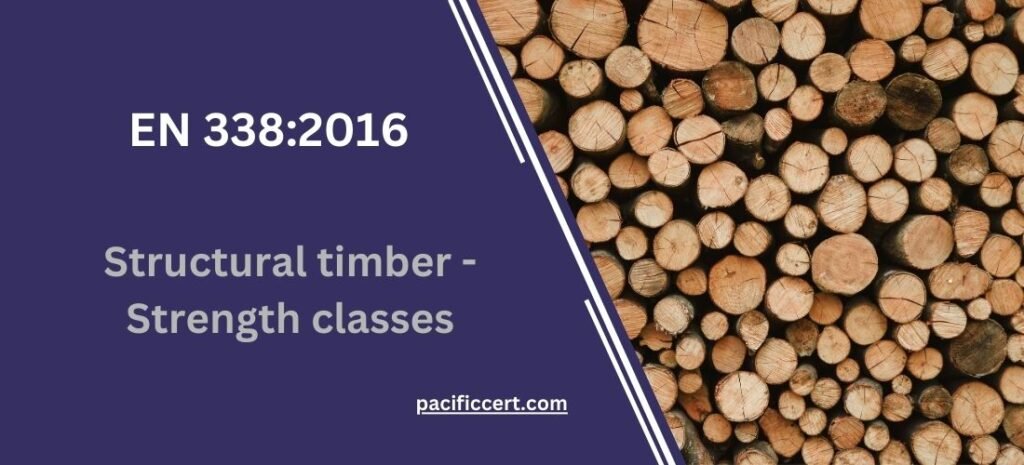
What is EN 338:2016 – Structural timber – Strength classes?
EN 338:2016 is a European standard that specifies strength classes and grading rules for structural timber. The standard applies to both softwood and hardwood species used in construction, and it defines the strength properties of the timber based on its density, which is determined through non-destructive testing methods.
The standard provides a set of strength classes, ranging from C14 to C40, that indicate the minimum values for the timber’s characteristic strength properties. Including bending strength, tensile strength, and compression strength. The strength classes are used by manufacturers and suppliers to grade their timber products, and by designers and builders to select the appropriate timber for a particular application based on its required strength.
It also includes requirements for the grading process, which involves visual and machine-based methods to sort timber into appropriate strength classes. The standard provides guidelines for how the grading process should be carried out. Including the sampling and testing procedures, as well as the quality control and assurance measures that should be in place.
EN 338 helps to ensure that structural timber used in construction meets minimum strength requirements. Promoting safety and reliability in building projects.
Requirements of EN 338:2016
Timber species: The standard covers both softwood and hardwood species commonly used in construction.
Grading rules: The standard specifies the rules for grading structural timber into different strength classes, based on its density and strength properties.
Strength classes: The standard provides a set of strength classes, ranging from C14 to C40. Indicating the minimum values for the timber’s characteristic strength properties. Including bending strength, tensile strength, and compression strength.
Determination of density: This standard provides non-destructive testing methods. To determine the density of the timber.
Sampling and testing: The standard specifies the sampling and testing procedures for determining the strength properties of the timber.
Quality control and assurance: The standard includes guidelines for quality control and assurance measures that should be in place during the grading process.
Finally, Marking: The standard specifies how graded timber should be marked. Including the strength class and other relevant information.
Benefits of EN 338:2016
Ensuring safety: The standard helps to ensure that the graded structural timber used in construction meets minimum strength requirements. Promoting safety and reliability in building projects.
Facilitating design: This standard provides a set of strength classes, making it easier for engineers and architects to select appropriate timber sizes and grades for different applications and load-bearing requirements.
Providing consistency: It specifies the grading rules, sampling and testing procedures, and quality control measures that must be followed. To ensure consistent and accurate grading of structural timber.
Improving performance: The standard promotes the use of timber species with good strength properties. Contributing to the overall performance of the structure.
Supporting sustainability: The standard encourages the use of sustainably sourced timber. By specifying the acceptable species and grades for use in construction.
Therefore, EN 338:2016 provides a framework for grading structural timber that promotes safety, reliability, and sustainability in building projects.
Who needs EN 338:2016 – Structural timber – Strength classes?
EN 338:2016 is relevant to anyone involved in the manufacture, grading, specification, or use of structural timber in building and construction projects. Thus, this includes timber suppliers, sawmills, engineers, architects, builders, contractors, and regulatory bodies responsible for setting and enforcing building codes and standards.
Pacific Certifications is accredited by ABIS, if you need more support with EN 338, please contact us at +91-8595603096 or support@pacificcert.com
Read About: ISO 13009:2015







